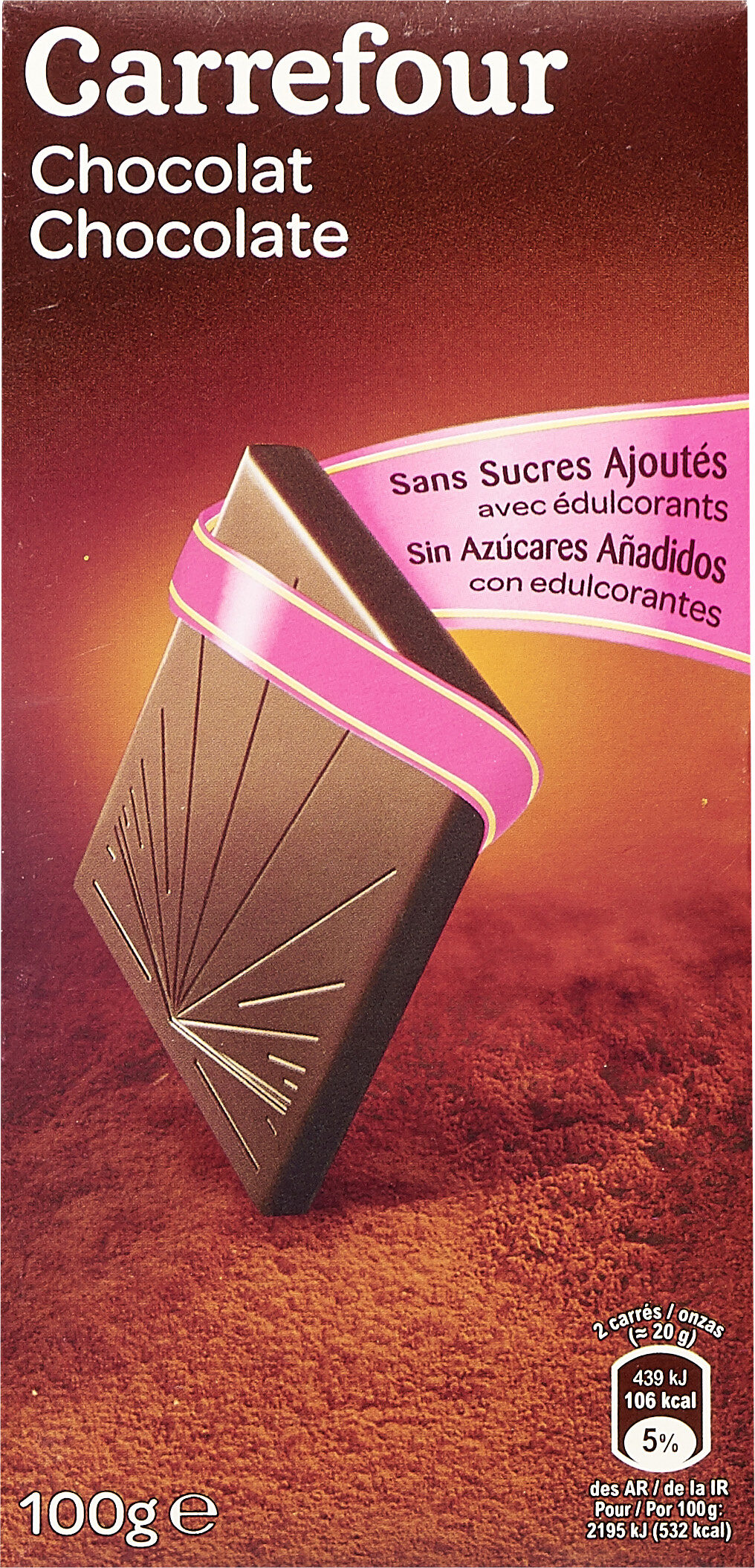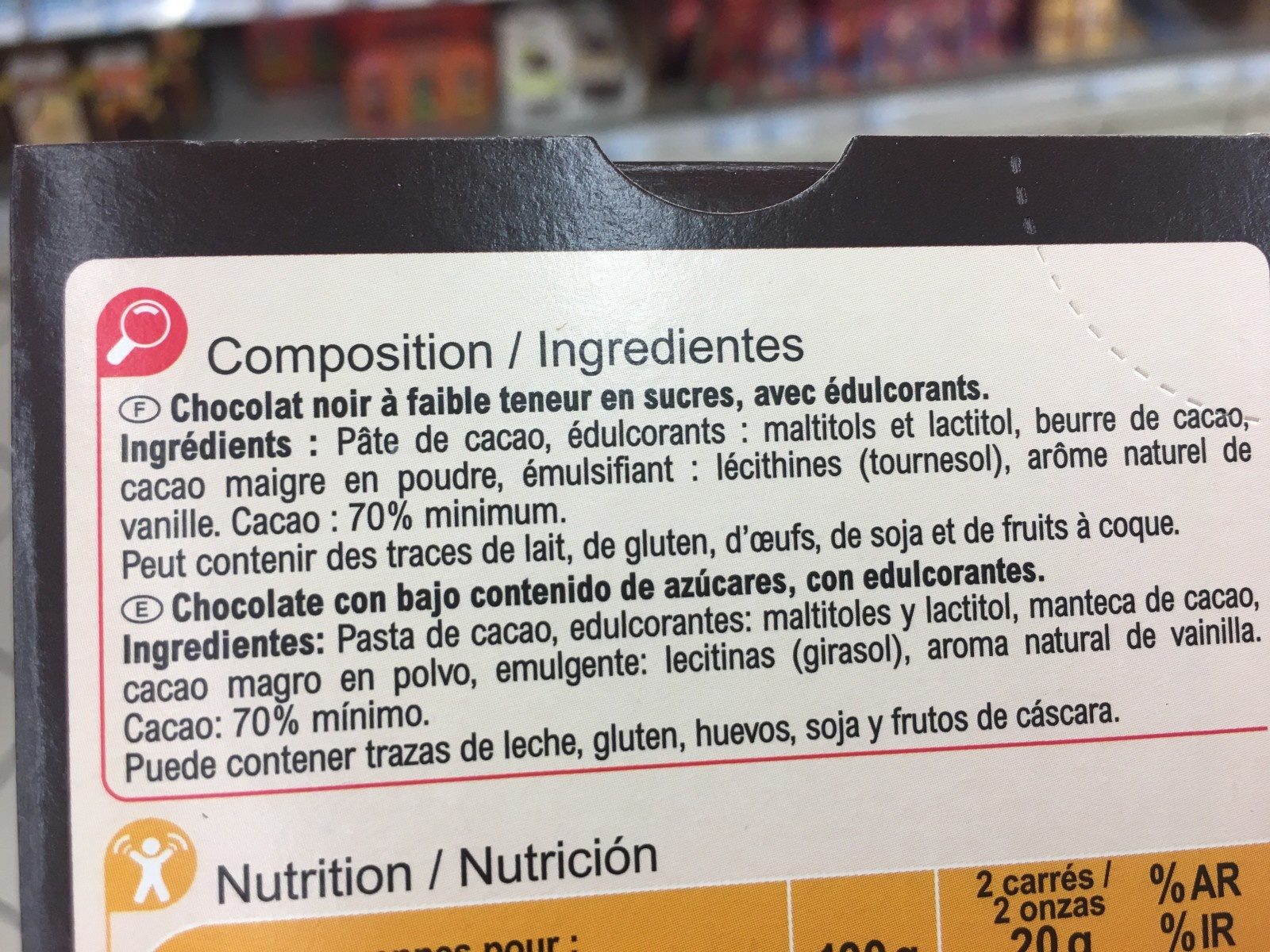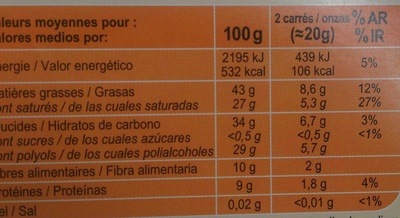Chocolat noir - Carrefour - 100 g
This product page is not complete. You can help to complete it by editing it and adding more data from the photos we have, or by taking more photos using the app for Android or iPhone/iPad. Thank you!
×
Some of the data for this product has been provided directly by the manufacturer Carrefour.
Barra-kodea: 3560070555932 (EAN / EAN-13)
Izen arrunta: Chocolat noir à faible teneur en sucres avec édulcorants.
Kopurua: 100 g
Markak: Carrefour
Kategoriak: en:Snacks, en:Sweet snacks, en:Cocoa and its products, en:Chocolates, en:Chocolates with sweeteners, en:Dark chocolates, en:Dark chocolates with sweeteners
Etiketak, ziurtagiriak, sariak: en:Low or no sugar, Low sugar, en:Excessive consumption can have laxative effects, en:Made in Spain, No added sugar, en:With sweeteners
Producer: Fabriqué en Espagne par RGSEAA 25.00135/SS pour Interdis. Fabriqué en Espagne par RGSEAA 25.00135 / SS pour Interdis. Pour Carrefour Espagne: fabriqué en Espagne par Natra Oñati RGSEAA 25.00135 / SS pour Interdis
Dendak: Carrefour
Matching with your preferences
Ingurumena
Carbon footprint
Ontziratzea
Transportation
Other information
Other information: Une consommation excessive peut avoir des effets laxatifs. 100 g e * avec édulcorants A faible teneur en sucres*
Abisua: Une consommation excessive peut avoir des effets laxatifs.
Conservation conditions: Conservation : A conserver à l'abri de l'humidité, de la chaleur (entre 18 et 20°C) et d'odeurs parasites. A consommer de préférence avant le : voir ci-dessous.
Customer service: Interdis - TSA 91431 - 91343 MASSY Cedex - France.
Report a problem
Datuen iturria
Product added on by wissal1983
Last edit of product page on by inf.
Produktuaren orria -gatik editatua carrefour, ecoscore-impact-estimator, kiliweb, moon-rabbit, openfoodfacts-contributors, org-carrefour, roboto-app, segundo, yuka.VnA1ZUhmc2FqNkVYaWZBWHJraUw1b3g0KzhLcGZqT1RMN1U5SVE9PQ.










